Workshop #1: Adaptive Control Systems with Stability and Performance Guarantees
October 8, 2019 (1-5 PM), Grand Summit Hotel, Park City, Utah
Tansel Yucelen, Organizer, and K. Merve Dogan, Co-Organizer
University of South Florida (emails: yucelen@usf.edu and dogan@mail.usf.edu)
Benjamin C. Gruenwald, Co-Organizer
Army Research Laboratory (email: benjamin.c.gruenwald.civ@mail.mil)
Ehsan Arabi, Co-Organizer
University of Michigan (email: earabi@umich.edu)
Summary
Adaptive control systems offer closed-loop system stability and performance in the presence of adverse conditions resulting from exogenous disturbances, imperfect system modeling, degraded modes of operation, and changes in system dynamics. In contrast to robust control systems, they have the capability to deal with such adverse conditions in an online fashion. This implies that are not tuned to a worst-case scenario as robust control systems and they can continuously improve their performance through learning. From a general point of view, adaptive control methods are classified as either direct or indirect. In this workshop, we focus on model reference adaptive control architectures, a well-known class of direct adaptive control methods. Specifically, starting from the basic concepts in the design and analysis of model reference adaptive control systems, we will present novel methods for their safe implementation in practical applications with stability and performance guarantees.
Expected Background of Participants
Feedback control systems, state-space methods, and stability theory.
Expected Audience
This workshop is open to all participants satisfying background requirements.
Impact
As is the case with virtually any research topic, for those who do not have experience with model reference adaptive control systems, it may be challenging to know where to start, how to start, and how to familiarize oneself with the recent state-of-the-art methods. This workshop is an excellent opportunity for graduate students and practicing professionals from electrical, mechanical, and aerospace industries to learn the basics and recent methods in model reference adaptive control systems. The organizers will particularly focus on tools and methods that will allow safe implementation of these control systems with stability and performance guarantees in practical applications. The knowledge gained from this workshop can be transferred to other classes of adaptive control systems.
Schedule
- Basic concepts in model reference adaptive control systems (40 minutes, Yucelen)
- Robustness modifications to model reference adaptive control systems (20 minutes, Yucelen)
- Stability conditions and their relaxation for model reference adaptive control systems in the presence of unmodeled dynamics (30 minutes, Dogan)
- Computing actuator bandwidth limits for model reference adaptive control systems (30 minutes, Gruenwald)
- Safe implementation of model reference adaptive control systems in the presence of both actuator dynamics and unmodeled dynamics (30 minutes, Dogan)
- Model reference adaptive and neuroadaptive control synthesis with strict performance guarantees (40 minutes, Arabi)
- Model reference adaptive control with dead-zone effect for learning in the presence of measurement noise and high-frequency signal content (20 minutes, Arabi)
- Model reference adaptive control for large-scale systems (30 minutes, Gruenwald)
Biographies
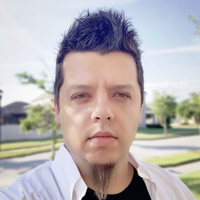
Tansel Yucelen is an Assistant Professor in the Department of Mechanical Engineering at the University of South Florida (since 2016). He received the Doctor of Philosophy degree in Aerospace Engineering from the Georgia Institute of Technology (2012). Prior to joining the University of South Florida, he held an Assistant Professor position in the Department of Mechanical and Aerospace Engineering at the Missouri University of Science and Technology (2013-2016) and a Research Engineer position in the School of Electrical and Computer Engineering and the School of Aerospace Engineering at the Georgia Institute of Technology (2011-2013). He was also a Summer Faculty Fellow at the Air Force Research Laboratory Wright-Patterson (2014) and Eglin (2015), and a consultant to NASA (2014-2016), Wichita State University (2017-2018), and the Missouri University of Science and Technology (2017-2018). He has co-authored more than 200 peer-reviewed papers in top internationally-recognized journals and conferences, and secured external grants and contracts through NSF, AFRL, AFOSR, ARO, DARPA, MDA, NASA, and ORAU. He was the recipient of the University of South Florida Research and Innovation Faculty Outstanding Research Achievement Award (2018), the University of South Florida College of Engineering Junior Outstanding Research Achievement Award (2017), the Aerospace Control and guidance Systems Committee Dave Ward Memorial Lecture Award (2016), the AIAA Technical Contribution Award (2016), the Oak Ridge Associated Universities Junior Faculty Award (2015), and the Class of 1942 Excellence in Teaching Award (2014). He is a member of the National Academy of Inventors, a senior member of the AIAA, and a senior member of the IEEE.
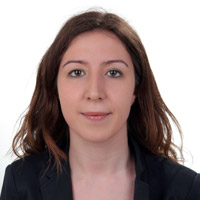
Merve Dogan received a Bachelor of Science degree from Pamukkale University in 2014 and a Master of Science degree from Izmir Institute of Technology in 2016. She is currently a Doctor of Philosophy candidate in the Department of Mechanical Engineering at the University of South Florida, where she is also a member of the Laboratory for Autonomy, Control, Information, and Systems. Her research expertise includes adaptive control, robust control, distributed control, and convex optimization with applications to robotics, autonomous vehicles, multiagent systems, and human-machine interaction systems, where on these topics she has authored/co-authored over 40 published/submitted journal and conference papers.
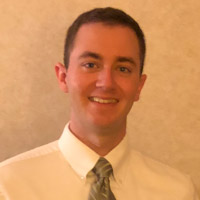
Benjamin C. Gruenwald received his Bachelor of Science from Valparaiso University in 2013 and his Doctor of Philosophy from the University of South Florida in 2018, where he was also a member of the Laboratory for Autonomy, Control, Information, and systems. He is currently a Research Aerospace Engineer with the Flight Sciences Branch in the Weapons and Materials Research Directorate of the U.S Army Research Laboratory at Aberdeen Proving Ground, Maryland. His research expertise includes adaptive control, robust control, convex optimization, decentralized control, and nonlinear systems with applications to hypersonic vehicles, guided munitions, and flexible morphing wing aircraft. On these topics he has authored/co-authored over 60 published/submitted journal and conference papers.
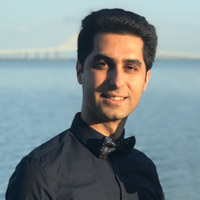
Ehsan Arabi received his Bachelor of Science from Sharif University of Technology in 2009, a Master of Science degree from Amirkabir University of Technology in 2013, and his Doctor of Philosophy from the University of South Florida in 2018, where he was also a member of the Laboratory for Autonomy, Control, Information, and systems. He is currently a postdoctoral research fellow in the Department of Aerospace Engineering at the University of Michigan. His research expertise includes dynamical systems and aerospace controls with specializations in robust adaptive control of safety-critical systems with performance guarantees and prescribed finite-time distributed control of networked multi-agent systems. On these topics he has authored/co-authored over 30 published/submitted journal and conference papers.
Workshop #2: A Short Course on Robot Control
Organizer: Prof. Stephen Mascaro, University of Utah
Abstract
Over the last decade, Prof. Mascaro has developed a unique hands-on curriculum for a course in Robot Control at the University of Utah. This curriculum covers the fundamentals of dynamic motion control and force/interaction control. In cooperation with Quanser Consulting, Inc., Prof. Mascaro has designed a modular open-architecture 2-DOF robot, where the motor torques can be directly and safely controlled using MATLAB/Simulink. Using a MATLAB Graphical User Interface (GUI) and series of Simulink Models, students can first simulate and then experimentally implement a variety of dynamic robot control techniques. Motion control techniques such as feedforward computed torque control, inverse dynamics control, robust sliding mode control, and adaptive control are used to demonstrate how to compensate for the nonlinear robot kinematics and dynamics to achieve fast and accurate trajectory tracking in joint space or operational space. Various force and interaction control techniques such as impedance control, admittance control, hybrid position/force control, multi-robot cooperation, master/slave teleoperation, and visual servoing are used to demonstrate how robots can dynamically interact with their environment.
This workshop is intended to serve as a short course based on Prof. Mascaro’s Robot Control curriculum that will give participants an accelerated hands-on learning experience in the theory, simulation and experimental implementation of robot motion and force control. The organizer anticipates this workshop will be of use to faculty who may wish to adopt and implement similar coursework at other institutions, as well as students and researchers who would benefit from training in Robot Control. Course materials including MATLAB GUI and Simulink Models will be shared with participants.

Bios:
Stephen Mascaro is currently an Associate Professor in the Department of Mechanical Engineering at the University of Utah, where he has been a faculty member since 2005. He received his Ph.D. in Mechanical Engineering from the Massachusetts Institute of Technology in 2002. His research is in the areas of robotics and control, systems dynamics, human-machine interaction, haptics, and bioinspired actuation. He teaches courses in Mechatronics, Robot Control, and System Dynamics. He is a regular attender of the Dynamic Systems and Control Conference and has presented papers at prior DSCC conferences on both his research and curriculum development.
Outline/Schedule:
9:00am-10:45am
Robot Motion Control: Theory and Simulation
- Review of Robot Dynamics
- PD Control in Joint Space
- Nonlinear Feedback Compensation
- Feedforward Computed Torque Control
- Inverse Dynamics Control
- Robust Sliding Mode Control
- Adaptive Control
10:45am-11:00am
11:00am-12:15pm
Robot Motion Control: Hands-On Experiments
- PD Control in Joint Space
- Nonlinear Feedback Compensation
- Feedforward Computed Torque Control
- Inverse Dynamics Control
- Robust Sliding Mode Control
- Adaptive Control
12:15pm-1:30pm
1:30pm-3:15pm
Force/Interaction Control: Theory and Simulation
- Operational Space Control
- Stiffness/Impedance Control
- Compliance/Admittance Control
- Direct Force Control
- Hybrid Position/Force Control
- Multi-Robot Coordination
- Master/Slave Teleoperation
- Visual Servoing
3:15pm-3:30pm
3:30pm-4:45pm
Robot Force/Interaction Control: Hands-On Experiments
- Operational Space Control
- Stiffness/Impedance Control
- Compliance/Admittance Control
- Hybrid Position/Force Control
- Master/Slave Teleoperation
- Visual Servoing
4:45pm-5:00pm
Wrap-up and Adjourn
- Conclusions and Materials Dissemination
Workshop #3: Stability Analysis of LTI Systems with Time Delays
Date/Time: Tuesday, October 8, 2019, duration 4h in the afternoon (1-5 pm)
Location: TBA
Further details: This workshop is based on author’s recently published book http://bookstore.siam.org/cs20/ as well as on his publications in the past three years.
Organizer(s):
Prof. Rifat Sipahi, Northeastern University, Boston, MA 02115, rifat@coe.neu.edu, (617) 373-6011
Workshop/Tutorial Abstract:
For decades, researchers in many fields investigated the influence of time delays on the behavior of dynamical systems. On Linear Time Invariant (LTI) systems, there has been tremendous progress from stability and control design points of views. Specifically, main questions in these efforts include: (i) what is the largest delay that a closed loop system can withstand without losing stability; (ii) for a given delay in the closed loop system how should the controller gains be selected to prevent instability; and (iii) how could closed loop system eigenvalues be computed in order to assess and approximate closed loop performance.
This workshop will focus on continuous time LTI systems from an eigenvalue-based approach to cover materials for the audience to be able to answer the questions (i)-(iii), and develop their own approaches to analyze similar classes of systems. The lecture will also provide sufficient and concise background starting from 1960s to date, will discuss the challenges and limitations, and demonstrate how to solve benchmark problems step by step using Maple and Matlab software. Details of workshop coverage are provided below.
Expected Background of Participants:
Knowledge of LTI control systems, stability theory, pole placement, eigenvalue concepts, and root locus.
Expected Audience:
This workshop is open to all participants satisfying background requirements.
Need for the Workshop/Tutorial:
Dynamical and control systems are becoming more and more complex, with multiple sensors, actuators, and cyber/network components. This complexity inevitably brings time delays as an important parameter, as the very nature of the network is affected by latencies in remote communications, sensing, and due to computation efforts. Due to the presence of delays, closed loop system may function poorly, and even worse its stability may be lost, which need to be properly studied. Introducing to the interested audience the fundamentals to study stability and performance of time delay systems through easily communicable topics and examples has the potential to serve for further research in this rapidly growing field of dynamical systems.
Impact:
As is the case with virtually any research topic, for those who do not have experience with time delay systems, it may be challenging to know where to start, how to start, and how to familiarize oneself with the subject matter. One may also benefit from learning about existing tools utilized in time delay systems field, and possibly transfer this knowledge across other disciplines. This workshop is also an excellent opportunity for graduate students interested in infinite dimensional systems, robust control, and algebraic tools.
Part 1: Preliminaries (30 minutes)
Session 1A: Overview and Introduction
- Applications where time delays are critical
- Literature review (surveys, books, monographs, special issues)
Session 1B: Spectrum of LTI time delay systems
- Open loop vs closed loop systems
- Infinite dimensional eigenvalue problems
- Behavior of eigenvalues on the complex plane
- Tools to use to compute rightmost roots
(Lambert W functions, DDE BIFTOOL, QPmR, TRACE DDE)
Session 1C: Stability analysis in a parameter space
- Time domain vs. frequency domain
- D-subdivision / tau-subdivision theorems
- Computation of critical eigenvalues on the imaginary axis
- Sensitivity analysis: movement of eigenvalues across the imaginary axis
Part 2: Maple, Matlab, Simulink Implementations (3 hrs)
Session 2A: Rekasius transformation ~ 25 min
- Concept: From transcendental equations to algebraic polynomials
- Example 1 from Rekasius’s 1980 paper
Session 2B: Cluster Treatment of Characteristic Roots (Sipahi, Olgac) ~ 25 min
- Concept: Propositions I-II explained on single and two delay cases Example 2
- QPmR and TRACE DDE
10 min break
Session 2C: Use of Kronecker Sum (J. Louisell) ~ 25 min
- Concept: Propositions I-II explained on single and two delay cases
- Example 3
Session 2D: Frequency Sweeping (Chen, Gu, Niculescu) ~ 25 min
- Concept: Use of argument and magnitude conditions
- Example 4
10 min break
Session 2E: Delay Based Controllers (SISO and Multi-agent Systems) ~ 25 min
- Concept: Proportional-Retarded, Proportional-Integral-Retarded Controllers
- Example 5
- QPmR and TRACE DDE
Session 2F: Delay Margin Computation of Large-Scale Systems ~ 25 min
- Algorithmic framework
- Example 6
- QPmR and TRACE DDE
10 min break
Part 3: Discussion of Results, Interpretations, Limitations (together with the audience) (30 min)
Some of the Maple and Matlab files will be readily available for rapid demonstration of concepts, while on some examples audience will actively participate solving them on their laptops. References as well as Matlab, Maple files will be made available to the audience.

Rifat Sipahi. Biographical Sketch:
Sipahi received his BS from Technical University of Istanbul in 2000, MS and PhD respectively in 2002 and 2005 from University of Connecticut, all in mechanical engineering. Awarded with a Chateaubriand scholarship by the French government, he has been a postdoctoral fellow in France at Universite de Technologie de Compiegne, HeuDiaSyC Labs (CNRS) during 2005-2006. In August 2006, he joined the Department of Mechanical and Industrial Engineering at Northeastern University, Boston, where he is currently a professor.
Sipahi is the recipient of a 2011 DARPA Young Faculty Award, 2011 College of Engineering Martin W. Essigmann Outstanding Teaching Award, 2014 College of Engineering Faculty Fellow Award, and the 2015 ASME Dynamic Systems and Control Division Outstanding Young Investigator Award. He has also been actively involved in the ASME Dynamic Systems and Control (DSC) Division, taking editorial duties in division newsletter and division-led ASME DSC Magazine.
Sipahi’s scholarly activities include publication of 58 journal articles and 89 peer-reviewed conference papers, as well as 30 additional conference presentations. He co-edited four book volumes with Springer, which attracted over 100,000 chapter downloads to date. He has been actively involved as associate editor, program committee member, chair/co-chair in many conferences organized by ASME, IEEE, and IFAC, including the 2012 IFAC Workshop on Time Delay Systems, which he co-organized at Northeastern University, and of which he was the Program Editor.
Sipahi is also the lead organizer of three full-day educational workshops at 2013, 2014 European Control Conference, and 2013 IEEE Conference on Decision and Control, as well as a half-day workshop at the 2015 ASME Dynamic Systems and Control Conference. He is the lead author of the article entitled Stability and Stabilization of Systems with Time Delay, Limitations and Opportunities that was published in 2011 in IEEE Control Systems Magazine, with S.-I. Niculescu, C.T. Abdallah, W. Michiels and K. Gu as co-authors. This workshop will be primarily focused on his book entitled Mastering Frequency Domain Techniques for the Stability Analysis of LTI Time Delay Systems published recently with the Society of Industrial and Applied Mathematics.
Sipahi is a Fellow of ASME since 2014 and a Senior Member of IEEE since 2016.
Workshop #4
Practical Methods for Real World Mechatronic Control Systems
A half-day workshop, preceding DSCC 2019.
Tuesday, October 8, 2019.
Grand Summit Hotel, Park City, Utah
Presenter:
Daniel Abramovitch
Rationale:
The proverbial “gap” between control theory and practice has been discussed since the 1960s, but it shows no signs of being any smaller today than it was back then. Despite this, the growing ubiquity of powerful and inexpensive computation platforms, of sensors, actuators and small devices, the “Internet of Things”, of automated vehicles and quadcopter drones, means that there is an exploding application of control in the world. Any material that allows controls researchers to more readily apply their work and/or allows practitioners to improve their devices through best practices consistent with well understood theory, should be a good contribution to both the controls community and the users of control. This workshop is intended as a small but useful step in that direction.
Prerequisite skills (of participants):
Undergraduate level knowledge of feedback systems, sampled data systems, and programming. An honest interest in being able to translate control theory into physical control systems.
Intended Audience:
We believe that this workshop will be of great interest to three types of audience members:
For each of these groups – and those that are somewhere in the intersection of them – this workshop will address the gap from both sides, so as to give the participant a more complete understanding of how it applies to their particular situation.
Topic overview:
The general style for each topic will be to present the issue, discuss rational ways of thinking about a solution, and where possible, show a demo to illustrate the idea.
Overview, a.k.a. “Mind the Gap.” (1:00 pm [20 min])
- We will frame the workshop by taking a walk around a “practical” control loop, pausing to consider each element in a first-pass to set up the rest of the workshop.
System Models and Characterizing Them with Measurements, or why it’s both important and annoying to be discrete. (1:20 pm [40 min])
- Beginning with simple models, we will look at discretization and identification, exploring what a step response can tell us and when frequency methods are needed.
Simple Controllers for Simple Models, or why so many controllers are PIDs, and why some are not. (2 pm [60 min])
- The choice of PID control is intimately related to what we can measure and model. We will explore this connection and look at how to tune your controllers and how to tweak them to get the most from their simple form.
Practical Loop Design, Or Why Most Open Loops Should Be an Integrator, and How to Get There (3:30 pm [30 min])
- Here we will dive into loop shaping, including straightforward steps for loop shaping on a well instrumented system. We also introduce Bode’s Integral Theorem and Stein’s Dirt Digging to understand the effects of loop shaping on closed-loop sensitivity. We will also mention some of the implementation details that often limit this.
Filtering and Equalization for Mechatronic Systems and How to Actually Make State Space Useful for Them (4:00 pm [60 min])
- If everything could be handled with a PID, the world would be a much stiffer place. In order to get to that ideal open loop, we need to filter in an intelligent way. Along the path, someone may mention state space. We will try to understand why this is so rare in mechatronic systems and introduce a structure that may change that.
Integrating in Feedforward Control (5:00 pm [30 min])
- Feedforward control can make a controller better, if it’s done right. In this section we’ll explore the basic structures and uses of feedforward, and how to integrate feedforward into your setup.
Workshop outline, topic details, and tentative schedule:
We expect that there will be more written material for the workshop than can be presented in a half day. Any one of these topic areas could fill up half a day. However, these are the areas we hope to illustrate in the time we have.
1. Overview (20 min)

This will frame the style and topics of the workshop. Control engineers will all recognize the block diagram above, but in going from that to implementation, we need to consider a much richer block diagram, a version of which is shown below.

If we take a “walk around the loop” in this diagram, we discover a large set of pieces that need to be “gotten right” in order for the physical system to be properly controlled. Often, these blocks have not been discussed since the second week of the first undergraduate controls class. Specifically, we will first visit:
- The walk around the loop with a pure feedback loop, and with a feedback/feedforward loop. How and when do we choose to add in feedforward components? When can we not do this? This ties into basic questions about the physical problem, what information is available, and what can be done with that information.
- Physics and modeling, and modeling that we can use. How do we get from first principles (science) to models that help us do better control designs? What parts of our models can we verify from actual measurements? How do we work knowledge of current working loops into modeling for improved performance of the same system?

- Realizing that most modern implementations are on digital computers, how do we reconcile thinking in analog while implementing in digital? When is “sampling fast” sufficient and what insights and improvements can we gain from paying attention to how we discretize things?
- Time constants, physical systems, and the controls that they push. Process control, motion control, PLL (phase control and synchronization), mechatronic systems and other things that vibrate.
This introduction will introduce, frame, and motivate what we will do in the rest of the session, so while the topics are deep, they are intended as a “first pass” for the topics that will be more deeply discussed in the remaining sessions.
2. System Models and Characterizing Them with Measurements (40 min)
While advanced research often starts with some complex model, most practical control systems are based on an explicit or more often an implicit simple, low order, model. In this segment, we will start by calling out these basic implicit models, discussing the systems that motivate and demonstrate them, and discuss what measurements can be made on such models.
We must accept that all of our measurements will be made in discrete time, and so our derived models must deal with the effects of sampling. At the same time, we will show simple examples of why conventional discrete-time models can obscure the physical intuition of the original system so as to make tuning to physical parameter changes next to impossible for many systems. A few simple examples will make this obvious and motivate the rest of the measurement and modeling discussion. Specific topics will include the following.
- The assumptions and limitations of time-domain identification on discrete-time models.
- First and second order system models, and where to find them.

- Step response methods. Using the simple models above, what can we hope to gain from a step response method? How do we implement them in our control software so as to not be embarrassed by the better results from the digital oscilloscope? What are the limitations of step response methods? When is a step response measurement the only game in town?
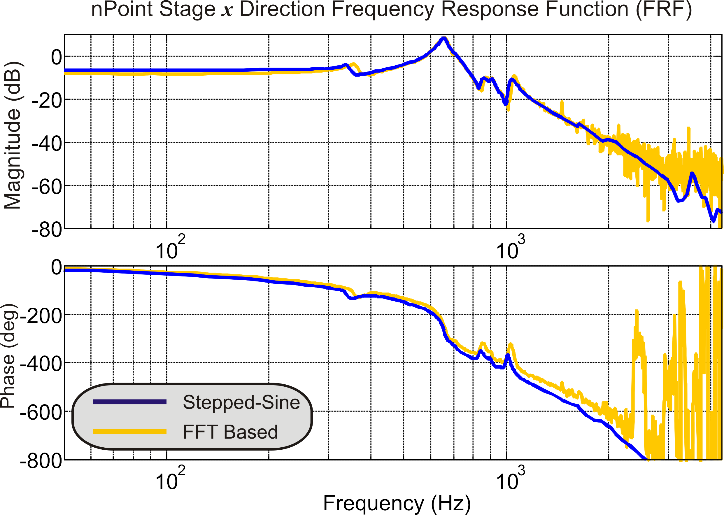
- Frequency response methods. When are they better than step response? When are they necessary in model characterization? When can you actually do such a measurement? What are the tradeoffs between FFT frequency response methods and stepped sine (known as swept-sine in industry)?
- Curve fitting for frequency responses
- Effects of delays (NMP from Padé) and what it means for design
3. Simple Controllers for Simple Models (or why so many controllers are PIDs) (60 minutes)
While PID controllers are the “Brand X” of most control Ph.D. candidates’ theses and spent the 1990s being derided by the denizens of fuzzy control, they remain today the most ubiquitous example of feedback controller design, by some measures accounting for 97% of all controllers in the field. Rather than dismissing this as an alternative and boring reality, we will examine the underlying implicit assumptions about modeling the physical system – and how those models derive from what can be measured (from the previous segment), to motivate the generic and fundamental utility of PID controllers. With that context, we will show in the first half of this segment:
- A unified framework for discussing PID controllers, which is helpful not only in generating a design, but also in understanding the underlying structures of off-the-shelf, commercial PID controllers. How do PID controllers relate to lead/lag controllers?
- A discussion for representing PID controllers in discrete time without losing the intuition of the continuous time framework.
- How PID controllers can be expected to behave in closed-loop for various low order models.
- Tuning PID controllers: from step response and from frequency response.
- Why using ‘D’ in PID often fails to improve performance and how to fix that. Where is ‘D’ most often beneficial?
- Things to consider with the integrator depending on control goals, including thoughts on integrator anti-windup.
4. Practical Loop Design, Or Why Most Open Loops Should Be a Constant or an Integrator, and How to Get There (30 minutes)
This section builds on the prior ones with a practical view of what is commonly called loop shaping. The idea is to talk about how loop shaping affects practical stability margins (i.e. gain and phase margins) and how things that affect those margins affect the behavior of the closed-loop system. With this context, we can discuss:
- Effects of dynamics, and how we can handle these with our filters as equalizers.
- Desired open loop shapes (integrator) and closed-loop shapes (smooth low pass filter) and how they are related.
- Bringing it all together with Bode's Integral Theorem and Stein's Dirt Digging
5. Filtering and Equalization for Mechatronic Systems and How to Actually Make State Space Useful for Them (60 minutes)
In the movie trailer, this section could be labeled, “when simple models go bad”. Specifically, we will discuss system models with higher order dynamics, and what this means for control design. In many frameworks, the first resonant mode signifies the frequency at which all control effort should stop. The commonly used PI controllers generally stop at ¼ the first resonant frequency. For other systems, such as chemical process control, the performance limiting negative phase is dominated by delays in the system. Getting beyond these limitations involve:
- Having a requirement to control faster.
- Having a reliable model of the higher frequency dynamics from measurements on the system itself. We will discuss ways to make these measurements more automated, more built in to the controller, thereby minimizing the per measurement costs.
- Having a design methodology for compensating for those dynamics. Filters as equalizers, and why mechatronic systems usually use biquad cascades.
- Filters in control loops: do’s and don’ts
- Illustration using simulation model of a motion control system that has a resonant peak. Show how notch filter + PID controller accomplishes much faster response than PID alone.
With this framework, we will move to the “third rail” of mechatronic control of high Q systems. We will discuss what makes this so hard and discuss how the Biquad State Space structure allows us to move beyond the typical limitations. We will also show how the BSS restores some of the original promise of state space methods, allowing us to have digital models that more closely mirror our physical models, which in turn allows us to compare models with lab measurements – to put virtual and physical scope probes in corresponding parts of the model and physical system.
6. Integrating in Feedforward Control (30 minutes)

This section will discuss practical application of feedforward control to a feedback loop. In large part, feedforward can remove a lot of the potential error from the control loop, unburdening the feedback control system. But in some situations, it can introduce error. There are two basic forms of FF: Plant Injection (PI) and Closed Loop Injection (CLI).
- When can we use feedforward? When is it a good idea? What is the benefit?
- How should the feedback loop be designed for feedforward (idea: integrator OL -> LPF closed-loop -> multi-lead feedforward). What about PI form? How to choose.
- What do each of FF choices (PI and CLI) imply for feedback controller design?
- Repetitive control and adaptive feedforward cancellers
- Feedforward control from auxiliary sensors
Presenter’s short bio:
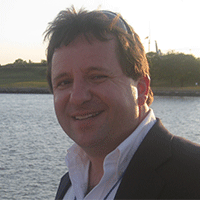
Dr. Daniel Abramovitch (Agilent Technologies)
Danny Abramovitch earned degrees in Electrical Engineering from Clemson (BS) and Stanford (MS and Ph.D.), doing his doctoral work under the direction of Gene Franklin. Upon graduation, and after a brief stay at Ford Aerospace, he accepted a job at Hewlett-Packard Labs, working on control issues for optical and magnetic disk drives for 11 1/2 years. He moved to Agilent Laboratories shortly after the spinoff from Hewlett-Packard, where he has spent 19 years working on test and measurement systems. He is currently in Agilent’s Mass Spectrometry Division working on improved real-time computational architectures for Agilent’s mass spectrometers, including the new Ultivo Tandem Quad product.
Danny is a Senior Member of the IEEE and was Vice Chair for Industry and Applications for the 2004 American Control Conference (ACC) in Boston. He was Vice Chair for Workshops at the 2006 ACC in Minneapolis, for Special Sessions at the 2007 ACC in New York, and for Industry and Applications for the 2009 ACC in St. Louis. He was Program Chair for the 2013 ACC and was General Chair of the recent 2016 ACC in Boston. He has helped organize conference tutorial sessions on topics as varied as disk drives, atomic force microscopes, phase-locked loops, laser interferometry, and how business models and mechanics affect control design. He served as the Chair of the IEEE CSS History Committee from 2001 to 2010. Danny is credited with the original idea for the clocking mechanism behind the DVD+RW optical disk format and is co-inventor on the fundamental patent. He was on the team that prototyped Agilent’s first 40Gbps Bit Error Rate Tester (BERT) and was able to cite a Douglas Adams book in one of his patents relating to that device. Along with his co-author, Gene Franklin, he was awarded the 2003 IEEE Control Systems Magazine Outstanding Paper Award. His favorite paper remains the one prompted by a question from his then 3-year-old son, which showed that the outrigger was a feedback mechanism that predated the water clock by at least a 1000 years. He was a Keynote Lecturer at the 2015 Multi-Conference on Decision and Control in Sydney, Australia. His recent work for Agilent was on future atomic force microscopes and high precision interferometers. His current work involves improving the real-time data collection and signal processing on Agilent’s Mass Spectrometers, and is part of the team that created Agilent’s multi-award winning Ultivo Tandem Quad LC Mass Spectrometer. He is the holder of over 20 patents and has published nearly 50 reviewed technical papers.